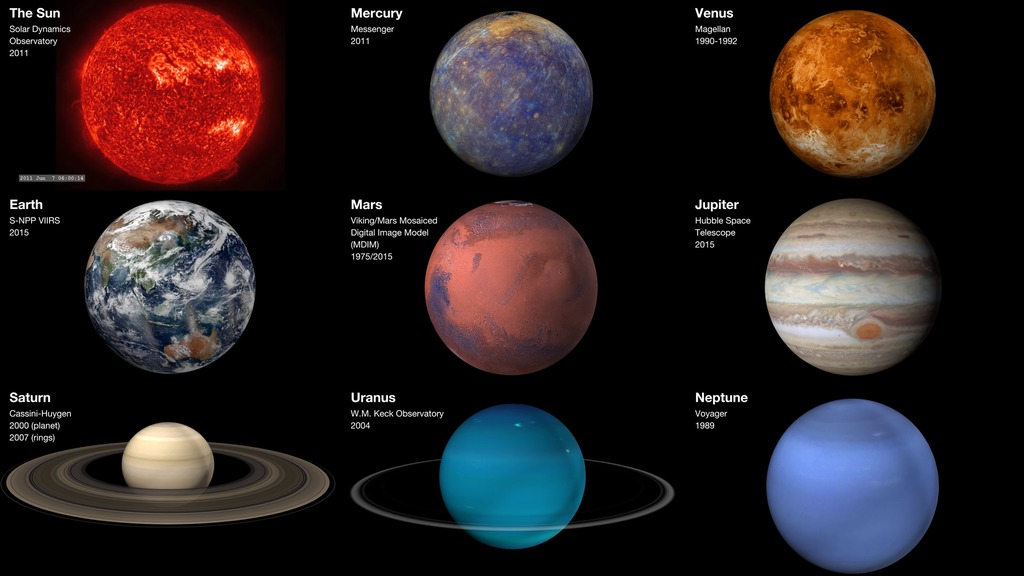What Do All 8 Planets Look Like NASA s Cassini spacecraft captured a series of Saturn images in 2016 at a distance of 1 9 million miles 3 million kilometers from the planet This wide angle mosaic portrait shows everything
Earth as seen from DSCOVR on July 16 2016 Over 40 years after the famous Blue Marble picture showed the world what our planet looks like from afar in gorgeous detail NASA s DSCOVR The order of the planets in the solar system starting nearest the sun and working outward is the following Mercury Venus Earth Mars Jupiter Saturn Uranus Neptune and then the possible
What Do All 8 Planets Look Like
 What Do All 8 Planets Look Like
What Do All 8 Planets Look Like
https://i.pinimg.com/originals/36/47/e8/3647e87a8a0ae70de557ab125816937e.jpg
Here frequent explosive volcanic eruptions shower the ground with sulfur and sulfur dioxide making the globe look like a yellow pizza scattered with black olives that are in reality patches
Pre-crafted templates use a time-saving solution for developing a varied series of files and files. These pre-designed formats and designs can be utilized for numerous personal and expert projects, consisting of resumes, invites, leaflets, newsletters, reports, discussions, and more, streamlining the content development process.
What Do All 8 Planets Look Like

Solar System

Photos Planets Our Solar System Images

How Do I Find A High Definition Map Of Our Solar System That Includes

Diagram Of Solar System Orbits

Image De Systeme Solaire All Dwarf Planets In Our Solar System

Solar System Planets With Orbital Period Vector Image Sexiz Pix

https://science.nasa.gov/resource/our-solar-system-2/
The eight planets are Mercury Venus Earth Mars Jupiter Saturn Uranus and Neptune Mercury is closest to the Sun Neptune is the farthest Planets asteroids and comets orbit our Sun They travel around our Sun in a flattened circle called an ellipse

https://science.nasa.gov/solar-system/planets/
08 Planets 290 Moons Explore the Solar System Mercury The swiftest planet Venus Earth s superheated twin sister Earth Our homeworld Mars The Red Planet Jupiter King of the planets Saturn Jewel of the solar system Uranus The original ice giant Neptune The farthest planet in our solar system Pluto A small world with a big heart Exoplanets

https://www.highpointscientific.com/astronomy-hub/post/astronomy-101/8-things-you-need-to-know-about-the-8-planets-in-our-solar-system
Three of them Io Ganymede and Callisto are larger than our own moon while the fourth Europa is only 10 smaller Ganymede the largest of the four is also the largest moon in the solar system and is even larger than the planet Mercury Little wonder then that Jupiter goes by the nickname of the king of the planets

https://www.highpointscientific.com/astronomy-hub/post/astronomy-101/what-do-the-planets-look-like-through-a-telescope
Jupiter Jupiter is arguably the most interesting and accessible to owners of a small telescope Even binoculars will show its four largest moons Io Europa Ganymede and Callisto but almost any telescope will show these and so much more At around 30x Jupiter shows a bright white conspicuous disc with one or two brownish bands crossing

https://science.nasa.gov/solar-system/facts/
Size and Distance Our solar system extends much farther than the eight planets that orbit the Sun The solar system also includes the Kuiper Belt that lies past Neptune s orbit This is a sparsely occupied ring of icy bodies almost all smaller than the most popular Kuiper Belt Object dwarf planet Pluto Beyond the
By Arwen Rimmer Published October 21 2021 NASA JPL The planets of the solar system are varied in their appearance Mercury is slate gray while Venus is pearly white Earth a vibrant blue and All eight planets are visible across the evening and morning sky from now through early September Four bright planets have charmed us all summer Venus Jupiter Saturn and Mars Strung across the southern sky like a string of pearls they ve coaxed us outdoors every clear night in spite of the mosquitoes The quartet has also provided great
5 min Astronomers have discovered a six pack of planets formed at least 4 billion years ago and remarkably unchanged since orbiting a nearby sun like star The new planets described in a paper